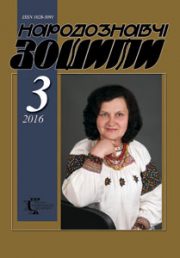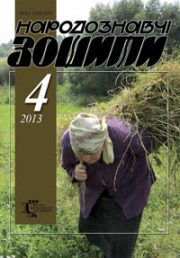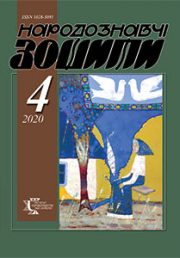The Ethnology Notebooks. 2018, 6 (144), 1552–1560
UDK 75.04.071.1:27-526.62-31](477.8-89-21)»1670/1760»
DOI https://doi.org/10.15407/nz2018.06.1552
Received 21.11.2018
ORCID ID: https://orcid.org/0000-0002-1202-1488
Kosiv Roksolana Romanivna, Ph.D. in Art Studies, Associate Professor,
the Department of Sacral Art of the Lviv National Academy of Arts,
Senior Researcher of the Department of Old-Ukrainian Art,
the National Museum in Lviv named after Andrey Sheptytsky,
38 Kubiiovycha Str., 79011, Lviv, Ukraine.
Contacts: e-mail: lanakosiv@yahoo.com
Abstract. The article deals with the iconography of Christ on the icons of iconostases by the authors of the masters of the church art center in the town of Rybotychi (Nadsisnnia, now Poland), which were active in the 1670—1760’s. It was traced that these masters, in general, adhered to the established in the XVII cent. in the Ukrainian iconostases traditions of reflection the image of the Savior, but in their works, we also see local features of iconography. It is noted that the craftsmen from Rybotychi were among the first to actively develop the image of Christ the Bishop in the rank of Prayer, which is known for the works of the late 1680s.
Keywords: iconography, icon, iconostasis, image of Christ, town Rybotychi (Nadsiannia).
REFERENCES
Kosiv, R. (2017). The 1660—1670s art works done by Tymotei — a painter and a burgher from Rybotychi. The Ethnology notebooks, 5, 1149—1155 [in Ukrainian].
Guseva, A., Sidorov, A., Kameneva, T., & Polonskaja, I. (1976). Ukrainian cyrillic printed books of the 16th — 18th centuries. Catalog of publications stored in the USSR Lenin State Library (Part І. 1574 — first half of the 17th c.). Moskov: SSSR State Library named after V.I. Lenin [in Russian].
The schematism of the Saint Savior Province of St. Basil the Great rank in Galicia, laid in at the St. Onufrii monastery in Lviv on the 24th and 25th of July, 1866, and a short look at the Rus’ki monasteries and the monasticism, from the roots of the christianity in Rus’ to this day. (1867). Lviv: In the printing house of the Stauropigianski Institute [in Ukrainian].
Giemza, J. (2017). Churches and icons of Lemko region. Rzeshow: Libra [in Polish].
Czajkowski, J., Grzadziela, R., & Szczepkowski, A. (Eds). (1998). Karpatian Ikon. Album of the Exhibition in the Ethnographic Park in Sanok. Sanok: Museum of folk architecture [in Polish].
Janocha, M., & Dubiel, Z. (2010). Icons in Poland: From the Middle Ages to the Present. Warsaw: Arkady [in Polish].
Korniecki, M. Paintings and «icons» by Jan Medycki. Contribution to the history of painting in the Carpathian province in the beginning of the 18th century. Bulletin of the History of Art, 2—3, 249—254. Warsaw: Art Institute of the Polish Academy of Sciences [in Polish].
The Mystic Press. Proceedings of the Colloquium of Recloses, 27 may 1989. D. Alexandre-Bidon (Ed.). Preface J. Delumeau. Paris: Cerf [in French].







